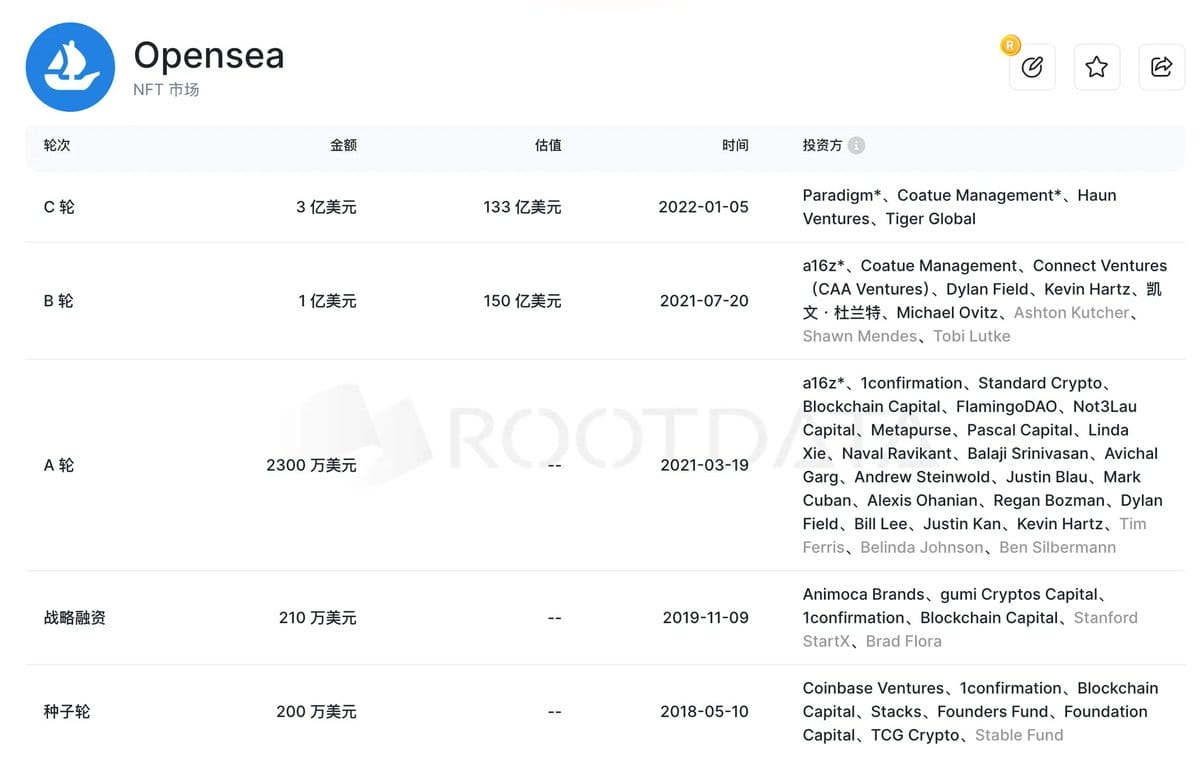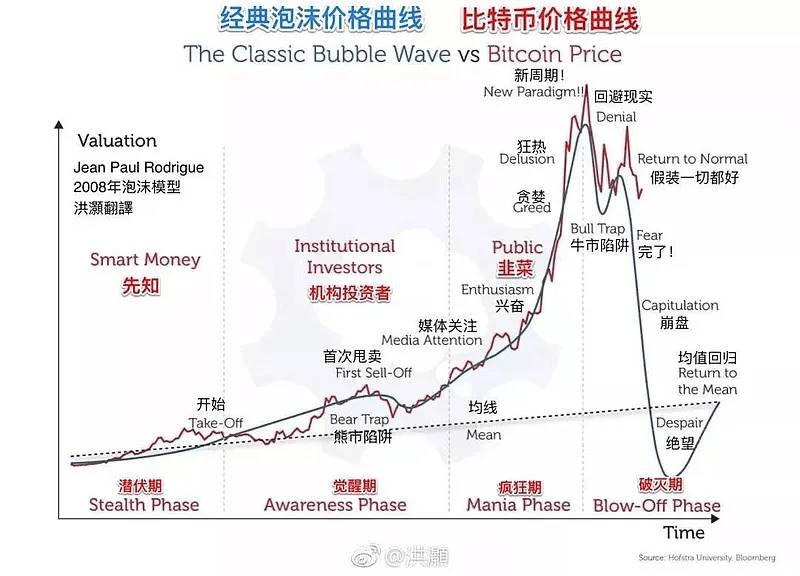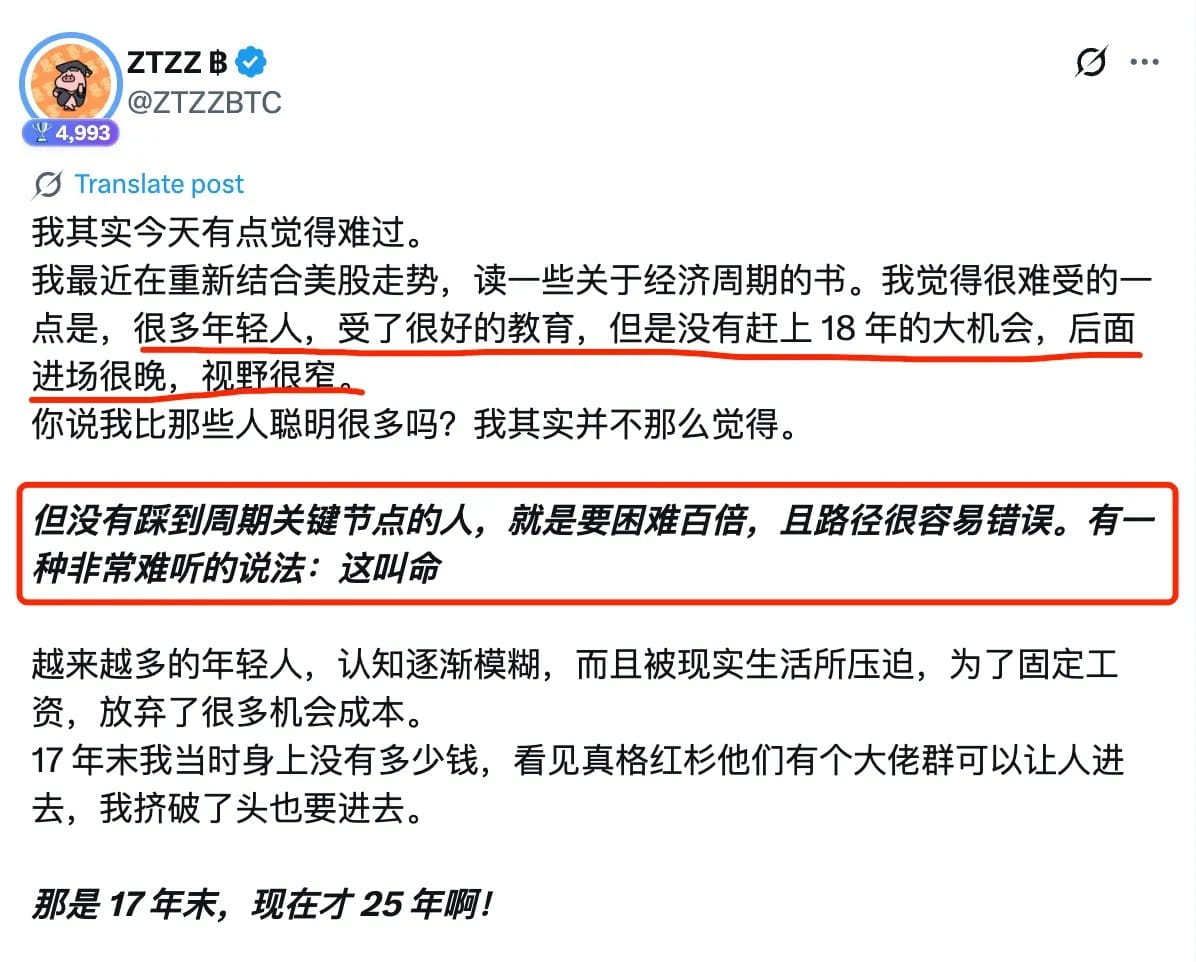Author: Howe Demystification
This article is based on Sister Nan's (How are the financing and valuation of Web3 VCs derived?) excellent article and provides some supplements and expansions.
Therefore, before reading this article, I recommend finishing the previous text. I will try to express my views in simple and understandable terms.
First, the financing and valuation process.
Here we need to first subdivide VCs into those with leading capabilities, those who have leading capabilities but do not lead, and those without leading capabilities.
In the financing and valuation process of a project, the power distribution is: VCs with leading capabilities > VCs with leading capabilities but no lead ≈ VCs without leading capabilities.
Moreover, the earlier the financing round, the greater the voice of the leading VC. From my observation of project financing phenomena, leading VCs generally only appear in the first two rounds of financing; thereafter, it is basically either strategic financing or ordinary rounds without a lead investor.
So why is this the case?
The biggest problem an early project faces in financing is—where can I find money? Most project parties have very narrow channels to pitch to investors; either they seek introductions from acquaintances, or they find FAs to connect with VCs, or they seek help from angel investors.
Moreover, VCs with leading capabilities generally not only provide investment but also act as advisors in the early rounds. They assist internally with narrative adjustments, modifying decks, designing tokenomics, and formulating financing terms; externally, they connect with various VCs, introduce project collaborations, and endorse marketing activities.
It can be said that the level and position of the leading VCs in the first round basically determine the project's ceiling. The participation methods of VCs with leading capabilities but no lead and those without leading capabilities are mostly just providing funds, while the former may occasionally provide additional resource support. Therefore, project parties should be cautious in choosing their leading partners at this stage.
After categorizing VCs, we also need to classify projects into existing sector projects and completely new sector projects.
The valuation of existing sector projects is relatively easier to determine, generally based on the total market value of the sector relative to the entire market to set the ceiling, and then benchmark the market capitalization of the leading projects in the current sector by a certain proportion. If the project has some extra bargaining power, the proportion can be increased.
The valuation of completely new sector projects is basically more arbitrary. Generally, such projects are first participated in by the leading VCs, who then use a series of 'standards/data/processes' to initially price this sector and then roughly finalize the specific project's valuation.
Generally, projects that occupy a position early on will have some premium in valuation; after all, if the sector is not disproven, pricing a bit higher within a reasonable expectation can still play a role in expanding market size (bubble).
But to be honest, I think no matter how much analysis is done, it is still difficult to provide a reasonable valuation range for the sector early on; it generally requires a step-by-step approach and gradual adjustments.
Also, why can only the leading VCs analyze the valuation of the sector here? Can other VCs do it?
The answer is yes, but it’s not very useful. Because such analysis requires sufficient quantity and accuracy of market information to be conducted, and the top leading VCs have a huge advantage in this regard (analogous to being the top predators in the ecological chain).
Other VCs can also participate, but without sufficient information sources, it is also difficult to arrive at a reasonable and accurate result. Therefore, most of the time, they just listen to the 'boss'.
Second, how project parties formulate their own project valuation.
This part mainly aims to demystify; what you think of the project valuation is derived from individual calculations and research, but in reality, these are just isolated cases in the vast sea of data. Most of the time, it is:
➣ Looking at the financing information of competitors next door, just slightly adjusting it up or down.
➣ Being deceived by early-stage VCs, who want to grab more chips, and the project parties foolishly comply (a common pitfall for first-time entrepreneurs).
➣ Mysterious confidence, coincidentally catching the corresponding market surge, leading the project party to become overconfident and randomly increase prices.
➣ Only listen to the leading VCs; whatever the money lord says is what it is.
……
Many times, the project parties themselves find it hard to make sense of their finances, and the phrase 'the world is a giant grass stage' is still gaining credibility.
This is similar to what the earliest batch of domestic venture capital investors, Zhuang Minghao, said: most investments and valuations are 'black boxes'. Before VCs invest in a project, they do not really have mature methodologies or investment logic. It can be said in hindsight, but it cannot be predicted beforehand.
I also highly recommend everyone to watch Teacher @HanyangWang's video (Zhuang Minghao: Does VC investment really have methodology? Decisions, regrets, taste, and stories from the early chaos of mobile internet), which can help you with what I wrote earlier (The Three-Part VC Evolution: A Chronicle of Arbitrage).
Basically, there are more different perspectives added to the operations of VCs (I will have the opportunity to write a separate reflection later).
Third, is there great significance in discussing financing and valuation?
I personally think it can be big or small, but it should not be completely trusted. Because I think the analogy that Zhuang Minghao uses for the financing valuation process is very vivid.
VC investment, especially in the early stages, is very much like ancient rituals for rain. Looking back now, these rituals have no scientific basis, but why have so many historical records from so many countries had similar ceremonies? Because humans seek some certainties amid great uncertainties to continuously repeat. If it is truly realized, even if only partially, it will be upheld as a ritual, and that ritual, to put it bluntly, or more straightforwardly, is the fund's taste/preference/strategy.
This process involves a lot of timing, location, and harmony, with many uncertain factors.
It's like ancient people praying for rain, just when the sea wind brought moisture, cooling and condensing it into clouds and rain. Yet people mistakenly believed that the ritual was effective, placing hope in this uncertainty.
Let's take another example from the industry: in 2021 and 2022, Opensea had a valuation of over $10 billion during a period of ample liquidity in the bull market and a hot NFT sector. Is this valuation a reasonable one derived by VCs through various methods? Would any VC think this valuation was too high at that time? In fact, most VCs just fear not being able to invest; who cares whether the valuation is reasonable or not (don't think VCs won't FOMO).

Opensea's financing journey
The so-called timing, location, and harmony essentially correspond to the bubble cycle theory. Different stages of the bubble correspond to different liquidity and sentiment in the market, and these liquidity and sentiment lead to certain deviations in financing and valuation, i.e., FOMO causes financing valuation to be somewhat higher than normal, while FUD causes financing valuation to be somewhat lower than normal.

Bubble cycle theory.
Moreover, there is a very interesting phenomenon here—some VCs or investors have investment logic in a certain sector that seems very instructive in hindsight, but did they ultimately make money relying on their own logic? Not necessarily, most of them did not make much (a bit of self-criticism).
Thus, sometimes, even more theories are not as effective as intervening at the right timing.
History always repeats itself; when you look back at the past two investment cycles, the trends are basically as shown in the diagram below:

Fourth, some supplements based on parts of the original text.
This section will present personal views on some subsections of Sister Nan's original text, for reference only.
Number of projects at different levels of 'valuation/financing'
It is necessary to exclude special values from the existing data, such as the previously mentioned $10 billion valuation of Opensea; these special variables have a significant impact on the results and are not very meaningful as references.
Essentially, these types of projects are due to the overly high/low valuation and financing caused by greed/panic emotions in the market environment at that time, which has diverged from the market's normal sentiment. So either choose to exclude them or choose to analyze them separately.
The impact of financing rounds on 'valuation/financing' multiples.
From what I currently see, the total number of financing rounds is generally 3-4 or fewer. More rounds are not very meaningful for crypto projects; currently, only major infrastructure projects that appeared in the first two rounds and leading innovative sectors during the bull market FOMO can exceed this number.
In addition, projects that have emerged in the past two years generally do not exceed this number. Moreover, if there are so many rounds of financing, the time dimension must have crossed a bull and bear market; aside from the projects continuously pivoting to find VCs to take over and then pouring into retail investors, I can't think of any other possibilities.
The impact of financing years on 'valuation/financing' multiples.
This part essentially corresponds to the bubble cycle theory mentioned earlier, as the extent of FOMO varies at different times. Moreover, you will find that the dividends and liquidity in Crypto are currently in a declining state.
The ICO wave in 2017, DeFi Summer in 2021, the inscription ecosystem in 2023, and the meme wave in 2024. The liquidity supported by each macro wave is getting smaller and smaller, and the liquidity that the market can overflow is also decreasing. The phenomenon of flooding is unlikely to appear; at most, it is just a bit of blooming.
From my current perspective, I think the accumulation of Crypto over the past decade or so constitutes a complete bubble cycle theory. With the introduction of various compliance policies in the past two years, we are about to enter a new cycle of innovation and discovery, and I look forward to more opportunities arising.
The relationship dynamics among project parties, VCs, exchanges, and ordinary investors in different market environments.
This deduction has many possibilities, with different roles harboring their own intentions, but all cannot escape one goal—maximizing their own interests. There are many ways to achieve this goal, forming a very large ecological map that will change with the industry's development.
If you can figure out this ecological map, I believe you can understand many things, such as who makes what money, and you will also know which path you are suitable to take and what money you can earn. Unfortunately, I only know a few rare cases.
But having said that, after almost two years in the industry, I've found that making money is all about good timing; luck is also part of strength.
This point has also been mentioned by Teacher ZZ; entering the right industry at the right time really feels like picking up money, but often the cognition of such people is disproportionate to their asset scale. Just like the recent incident where 'a user lost about 4 million yuan in assets by purchasing a cold wallet on JD.com', there are people with huge wealth who do not even know the basic survival rules of this dark forest, which also confirms that choice is more important than effort.

https://x.com/ZTZZBTC/status/1948687136322191450
Finally, I wish everyone could seize their own opportunities. Slow is fast; many things may not be as 'high-end' as they seem. Demystification is to make more money, so let's encourage each other 🫡


